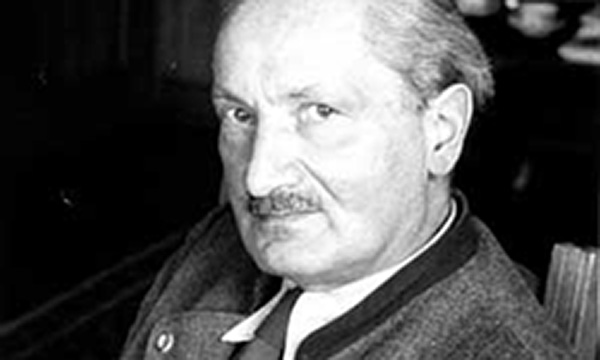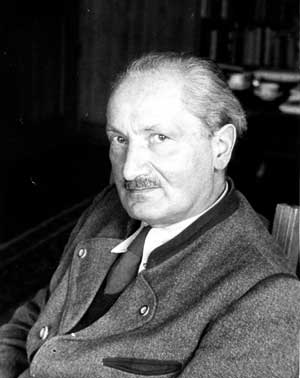Given that I am using a Hermeneutic Phenomenological approach, it must come as no surprise that Heidegger’s work has had a profound impact on my thinking. With that said, I think that his theories on Being (Dasein), especially two of his most basic neologisms used to describe various attitudes towards things in the world, can shed light on the all too important issues of immersion and presence in virtual worlds. As I previously mentioned in a past post, Heidegger strove to overcome the Cartesian object/subject dualism by theorizing that all consciousness is consciousness of something. In other words, there cannot be consciousness without objects and vice versa. In simplistic terms, Heidegger theorized that most activities we are involved in on a daily basis do not necessitate theorizing – we usually do something with the aim of achieving something. Heidegger described this attitude as Ready-to-Hand, using the example of a hammer, which is used without the need for conscious theorizing. However, let’s say that something happens that prevents us from achieving our aim, for example, the hammer (or whichever tool we may be using) breaks. At this point, we become aware of the workings (or lack thereof) of the tool – in other words, we need to shift our focus from achieving our aim to figuring out (theorizing) why the tool is broken and what can be done to fix it. This is what Heidegger called Present-at-Hand.
Similar scenarios, of course, can happen in SL. Imagine, for example, that you are participating in one of Vaneeesa’s performances. You’re socializing with your friends, laughing, having a good time – you are using SL without theorizing about it… the computer becomes a sort of extension of yourself in the same manner than a hammer would. Now imagine that you are immersed in the virtual world and all of a sudden, the sim crashes. You suddenly become aware that the software is not working the way it should and you have to consciously think about the next steps you must take to rectify the situation. This tear in reality transported you back to your physical setting, where you are sitting in front of a computer screen rather than being immersed in a virtual world populated by friends. According to Heidegger, it is only when objects are leveled down in such a way that we can theorize about them. While Heidegger obviously was not thinking about VW, I think that we can make a powerful argument for his theories in virtual environments as long as they are embodied. If you are interested, here’s an excerpt of my dissertation dealing specifically with these concepts:
Presence as being-in-the-world. Existential philosophy, especially Heideggerian metaphysics, as argued by Zahorik and Jenison (1998), offers an alternate view of presence from the rationalist tradition based on Cartesian dualism between res extensa and res cognitans (Flach & Holden, 1998; Sheridan, 1999). Primarily concerned with the nature of being and the question of what it means to be, Heidegger rejected the Cartesian object/subject dualism in favor of an approach to meaning contingent on contextual interpretation (Zahorik & Jenison). Heidegger’s notion of being-in-the-world as the basic state of Dasein informed his early work starting with Being and Time, published in 1927. Following this view of reality, presence is directly tied to a person’s perception of an environment’s ability to support action (Flach & Holden, 1998; Heidegger, 1927/2008; Zahorik & Jenison), a notion of particular importance when investigating the process of presence in virtual environments.
Heideggerian concepts of throwness, ready-to-hand, and present-at-hand are particularly resonant in HCI, having been used to explicate the mediating factor of familiarity on usability (P. Turner, 2008) and more generally, human being’s relationship to technology (Belu & Feenberg, 2010; Coyne, 1994; 1998; Dreyfus & Spinoza, 1997; Spagnolli et al., 2003; Winn, 1993). Heidegger (1927/2008) used the term throwness to describe the nature of human existence, positing that human beings are thrown into situations that require continuous action and interpretation on their part (Zahorik & Jenison, 1998). While meant to apply to actual existence, the Heideggerian concept of throwness, by emphasizing action-based responses to situations or environments and in turn, the inability to analyze such situations in a detached manner (Zahorik & Jenison), has been used extensively (Flach & Holden, 1998; Ihde, 2002; Ladly, 2007; Sheridan; 1999; Walters & Kop, 2009; Winn, 1993) or implied (Benford et al., 1995; Carassa et al., 2004; Mikropoulos, 2006; Prasolova-Førland, 2008; Riva, 1999; Slater et al., 1996; Spagnolli et al.) in virtual world research to describe the process of presence in these environments. Being “thrown” into a virtual environment is thus very similar to any other embodied situation; the extent of actions supported by the virtual environment and the similarity of such actions between the virtual environment and what Gibson (1986) called the invariants of the physical world, being of greater importance than visual verisimilitude in generating a behavioral and psychological sense of presence (Benford et al., 1995; Carassa et al.; Riva; Yee et al., 2007).
If the nature of existence is being-in-the-world, human-object interaction is of utmost importance given that artifacts in any situation or environment support action and meaning making. Heidegger’s (1927/2008) concept of ready-to-hand follows a similar reasoning as the notion of throwness, in that as posited, when interacting with an object such as a hammer to perform a given task, a stable representation of the object’s properties, or in the case of virtual worlds, representation of environmental properties, is impossible (Zahorik & Jenison, 1998); the purposeful interaction with the object makes the tool itself invisible to the user. It is only when the artifact can no longer support an action that the tool becomes visible, enabling analytical reflection about the action (Zahorik & Jenison); this is what Heidegger (1927/2008) called present-at-hand or breakdown.
In virtual environments, the ability to engage in purposeful action can lead to the sensation of performing in a non-mediated space (Benford et al., 1995; Ladly, 2007; Riva, 1999; Slater et al., 1996). Presence is disrupted when the virtual environment can either no longer support action as a result of slippages, inadequate or unexpected feedback, or failure to keep invariants of the actual world invariant in the simulated environment (Carassa et al., 2004; Yee et al., 2007). Breakdown, as argued by Boellstorff (2008), can be encountered in SL in the form of lag, which serves to demonstrate the cultural, but also intersubjective construction of time. Unlike space, time in SL and other virtual worlds resists virtualization in that while users can meet across spatial boundaries in the form of their respective avatars, they cannot transgress temporal boundaries. It is therefore not surprising that artifacts in a virtual environment, much like the environment itself, are formalized according to their potential for action and interaction, or their “readiness-to-hand” and that disruptions in the throwness of temporality resulting in breakdown emphasize the gap between virtual and actual, making users aware that a “shared virtual place assumes shared actual time” (Boellstorff, p. 106, original emphasis; Zahorik & Jenison).
Later writings by Heidegger (1954/2004; 1971/2001a; 1971/2001b; 1971/2001c; 1971/2001e; 1977) denote dwelling as the basic character of Being. While often disregarded in the HCI and VR literature, the concepts of dwelling and building are important to mention in conjunction with presence in virtual environments since they at once complement and contradict the usage of ready-to-hand in such research. Heidegger (1971/2001b; 1971/2001e) used the term dwelling to differentiate human being’s existence in the world from animals. According to Heidegger (1971/2001b), animals inhabit an environment while humans dwell in a world. In this manner, a world unlike an environment is spiritually and culturally constructed, meaning that being-in-the-world requires the fulfillment of spiritual and cultural needs over biological needs. Such a shift in meaning begs the questions of whether or not human beings can dwell, in the Heideggerian sense, in virtual worlds.
Upon closer reading, Heidegger’s notion of dwelling, especially in conjunction with poetry (1971/2001d) and works of art (1971/2001a), is closely related to his early concept of action and interaction, in that dwelling is to actively engage in thought and reflection (Dreyfus, 2006; Heidegger, 1954/2004). It must be kept in mind that culturally constructed virtual worlds existed long before SL in books, films, and other media beyond the digital (M. Bell & Consalvo, 2009; Žižek, 1997/2008). The symbiotic relationship between building and dwelling define virtual worlds as socially and culturally imbued places where shared practices and meaning, much like in the actual world, reinforce cultural practices and serve to develop commonly shared symbols and structures used to interpret the world (Dreyfus, 2006; Harrison, 2009; Paul, 2009; Waterton, 2010).
Following this logic, to dwell can be considered as the first dimension of MacIntyre et al.’s (2004) model of presence in mixed reality applications. According to MacIntyre et al., presence and aura share a complex and multidirectional relationship. Unlike Benjamin (1982b) who contended that aura could not be transferred to reproductions of a place or artifact (Peim, 2007), MacIntyre et al., citing Marcel Duchamps’ ready-mades, argued that aura can not only be transferred to reproductions, but is also enhanced by dissemination (Derrida, 1967). Aura can, however, only exist if a connection can be made between the concerned artifact and the experiencer’s, for lack of a better word, personal understanding of the world, or their Dasein. A preliminary requirement for aura to be felt when experiencing a place or object is therefore the ability for the experiencer to dwell in the world within which the artifact exists. When the experiencer is able to dwell, aura is generated which, according to MacIntyre et al., enhances presence, which can, in turn, further enhance aura. To paraphrase Jarmon (2009a; 2009b), virtual worlds such as SL, afford embodied action and interaction, extending identity to the world itself with and inside which residents dwell, in the Heideggerian sense.


